50 Amazing Facts We Learned in 2018
The wildest discoveries and finds from the year that was.

If you're the type of person who reads every single page of the newspaper, you know there is some seriously odd stuff being discovered every day. For example, in 2018 we learned that some Australian birds intentionally spread wildfires (rude!) and that the actual color of the universe is beige (say what?!). We discovered tens of thousands of new species (cool!) and realized that naked mole rates never age (ew).
And because a lot of this stuff never made front-page news, we decided to round it up ourselves. Read on to learn more about the fascinating facts we just learned this year.
1
The World's Oldest Cheese is 3,200 Years Old

While superstitious people question the wisdom of continuing to open Egyptian tombs, a recent discovery in an Egyptian archaeological dig has informed historians that humans have been making cheese for at least three millennia now. Made of either goat or cow milk, it probably wouldn't taste anything like modern cheese, though, and it might even be host to a deadly bacterial infection called brucellosis. Nonetheless, some internet commenters of questionable wisdom have expressed a desire to eat it and find out.
2
Naked Mole Rats Don't Age
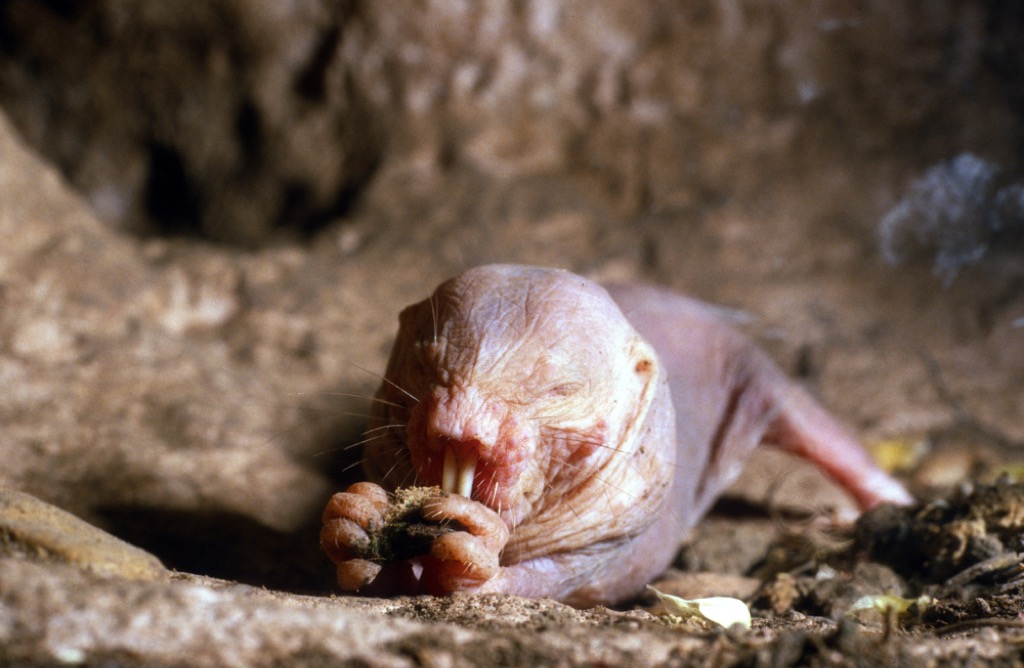
If you've ever seen a picture of one of these weird little creatures, you'll remember it. Amazingly, they're as extraordinary as they are strange. In addition to being immune to cancer, naked mole rats don't appear to go through any kind of aging process. In other words, their mortality rate doesn't increase as they get older. They do, of course, die at some point—usually after about six years in a laboratory setting—but a 30-year-old naked mole rat is no more likely to die than a 2-year-old naked mole rat.
3
Climate Change Can Make Your Sleep Worse

As temperatures climb higher around the globe and individual heat waves drive new record temperatures, it seems that global warming (just one part of a changing climate) is having an unexpected effect—it's making the quality of our sleep worse. In a sense, it's not really a surprise, because people tend to sleep poorly anyway when they're hot.
However, a recent study has proven that this happens on a larger scale, too. Elderly people and those with lower incomes, both of whom are more likely to sleep poorly than those in other groups, were affected most strongly.
4
The World's Largest Underwater Caves are Full of Ancient Artifacts

It took divers 10 months to map the entire 216 miles of caverns below the shores of the Yucatan Peninsula in Mexico, and along the way, they made some remarkable finds. Ceramics, graves, and human remains from the ancient Maya civilization are scattered throughout the Sac Actun cave system. The leader of the project likened the dives to time travel, as though you had been transported 10,000 to 12,000 years into the past. As divers make more finds and map connections between caverns, the giant cave system could continue to "grow." And for more fantastical destinations, here are the 30 Most Magical Islands on the Planet.
5
The Large Pizza is the Better Deal

Let's say you and a friend both find that you're pretty hungry, but you also want to maximize your pizza-per-dollar ratio. Do you get two 14-inch medium pizzas for $12 each or one 18-inch large for $18? Though two mediums sounds like a lot more pizza, it's only a tiny bit more for a lot more money. A single large is as big as 1.7 mediums, yet, in this example, costs $6 less. The reason has to do with the square of the pizza's radius, but the important lesson here is to always order the large.
6
The Average Color of the Universe is Beige

We perceive different colors because the light that brings them has different wavelengths. That means you can express each color as a number, and if you can do that, it's possible to average them out. And if it's possible, scientists will try it, so astronomers got together, averaged the wavelengths of all the different colored stars we can see, and came up with…beige. While beige doesn't sound very exciting, the concept itself is pretty cool, and they even had a contest to find a better name, ending up with "cosmic latte."
7
Facebook Can Predict Your Personality Better Than Your Friends Can

The Facebook "like" button is more than a simple tool to communicate approval. Two psychologists created a Facebook app called myPersonality that asked respondents to fill out a personality test, at the same time giving the scientists access to their Facebook data. They ran all those likes, posts, and comments through a personality-predicting algorithm, and then compared the results to each user's self-reported test results. The two matched to a startling degree; on average, they were 15 percent more accurate than tests filled out by a user's friends and family.
8
Scientists Discovered Thousands of New Species
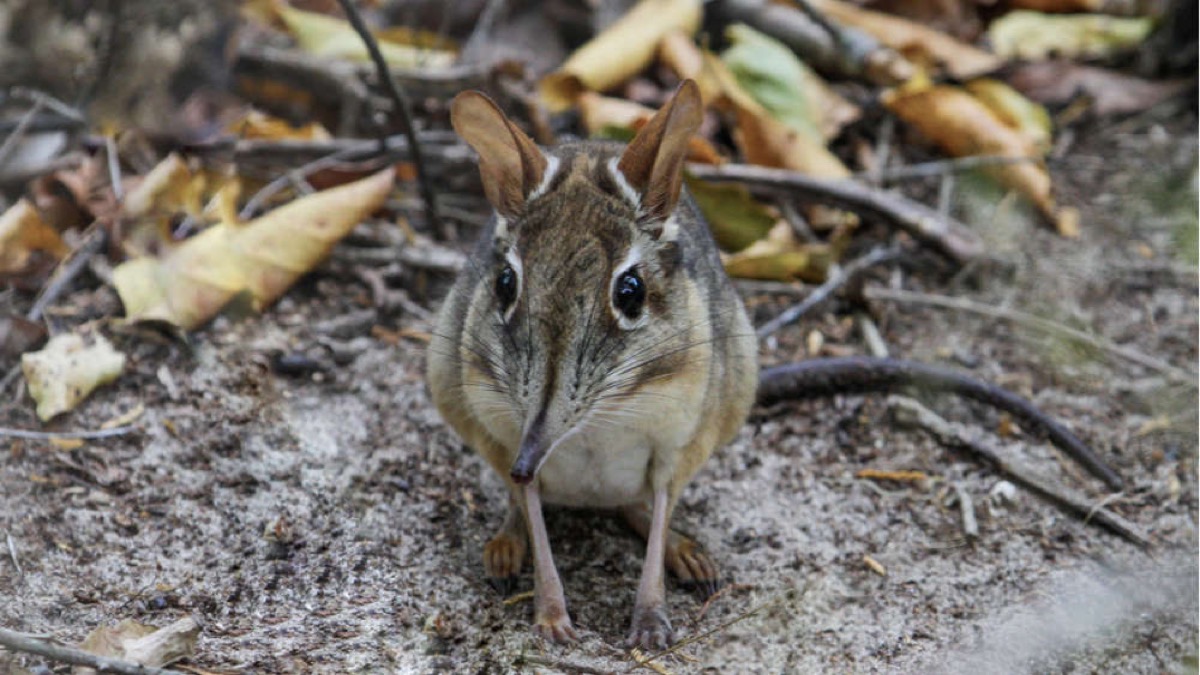
Although the totals for this year haven't yet been counted up, it's likely that the number of new species discovered in 2018 will be in the tens of thousands; 2016, for example, brought 18,000 new species to light. This year, some of the new animals include the leopard eel, the Central African slender-snouted crocodile, Genie's dogfish, and three (ah!) new spiders. Amazingly, experts say that 90 percent of species on Earth probably remain undiscovered. That's yet another reason to work to preserve the Earth's biodiversity.
9
Turkeys Have Doubled in Size Since 1960
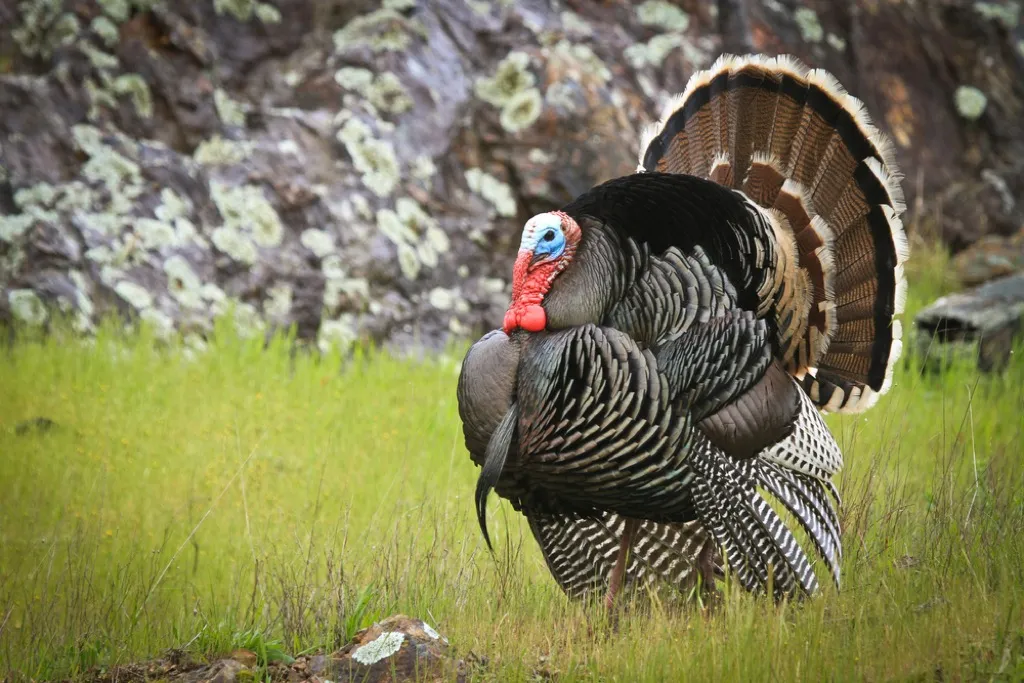
Though we might not pause to consider turkeys until Thanksgiving, turkey breeding is a large-scale industry. Like other livestock, turkeys are bred to increase their desirable aspects—in this case, the sheer quantity of their meat. Breeders have achieved an average gain of about 0.25 pounds per year, meaning that in the past five decades, the weight of an average turkey has grown from 15.1 to 31.1 pounds. Contemporary turkeys are so genetically different from 1960s turkeys (whose genetic strains still exist) that, even fed the same food, today's turkeys will grow twice as fast.
10
Blood Clots Can Take the Shape of the Lungs

A 36-year-old man walked into the emergency room with heart failure, so doctors connected him to a blood-circulating pump. It saved his life. But one of the complications of the procedure is the formation of blood clots, which can get into the lungs and need to be coughed out. Indeed, the patient did cough out a massive clot—shaped like a miniature tree. The clot had actually formed in the shape of the blood vessels of the lungs, and it's beautiful in a macabre sort of way. Doctors are amazed the man coughed it out in one piece!
11
Paper Cuts Hurt So Much Because They Barely Bleed

The bane of many office workers, paper cuts seem to hurt a lot more than they should for such a small wound. However, the small size of the cut is precisely what makes it sting so badly. With a larger cut, your red blood cells leap into action, clotting to stop the bleeding and beginning to form a protective scab that also covers your sensitive nerve endings. However, since paper cuts don't bleed much, your blood doesn't bother to form a scab, leaving those nerve endings unprotected and free to scream at you in pain.
12
George Washington is Still the Highest Ranking Person in the U.S. Army

During his time in the Revolutionary War, founding father George Washington was only a major (two-star) general; he was promoted after his presidency to the rank of lieutenant (three-star) general. It wasn't until WWI that the rank of four-star general was created to honor General John J. Pershing, and the highest rank was bumped up to five stars during WWII.
However, during the country's bicentennial celebrations of 1976, it was officially decreed that no officer may ever have a rank above President Washington, effectively making him the only six-star general.
13
Some Australian Birds Intentionally Spread Wildfires

Birds called the Black Kite, the Whistling Kite, and the Brown Falcon may sound pretty tame compared to, say, the Sydney funnel web spider. However, scientists are now discovering something that Aboriginal rangers have known for centuries—these birds will actually pick up smoldering debris from the front of a wildfire and fly it up to a kilometer away before dropping it, effectively spreading the fire. While the reason for this behavior is uncertain, it's a clear problem for firefighters. These birds can spread a blaze across natural barriers and past manmade firebreaks.
14
Banana Candy Tastes Like Pre-1960s Bananas

If you've ever eaten something with artificial banana flavoring, you may have noticed that it only kind of tastes like bananas. That's likely because the artificial flavoring was based on a different species of banana than what we find in grocery stores today. Today's bananas are mostly the Cavendish variety, but banana flavoring is based on the Gros Michel, a sweeter strain of the fruit that's not grown in bulk today because it's susceptible to a fungus called Panama disease. The Cavendish is far more disease-resistant, so, as a result, our bananas no longer taste like our banana candy.
15
President Coolidge Had a Pet Raccoon
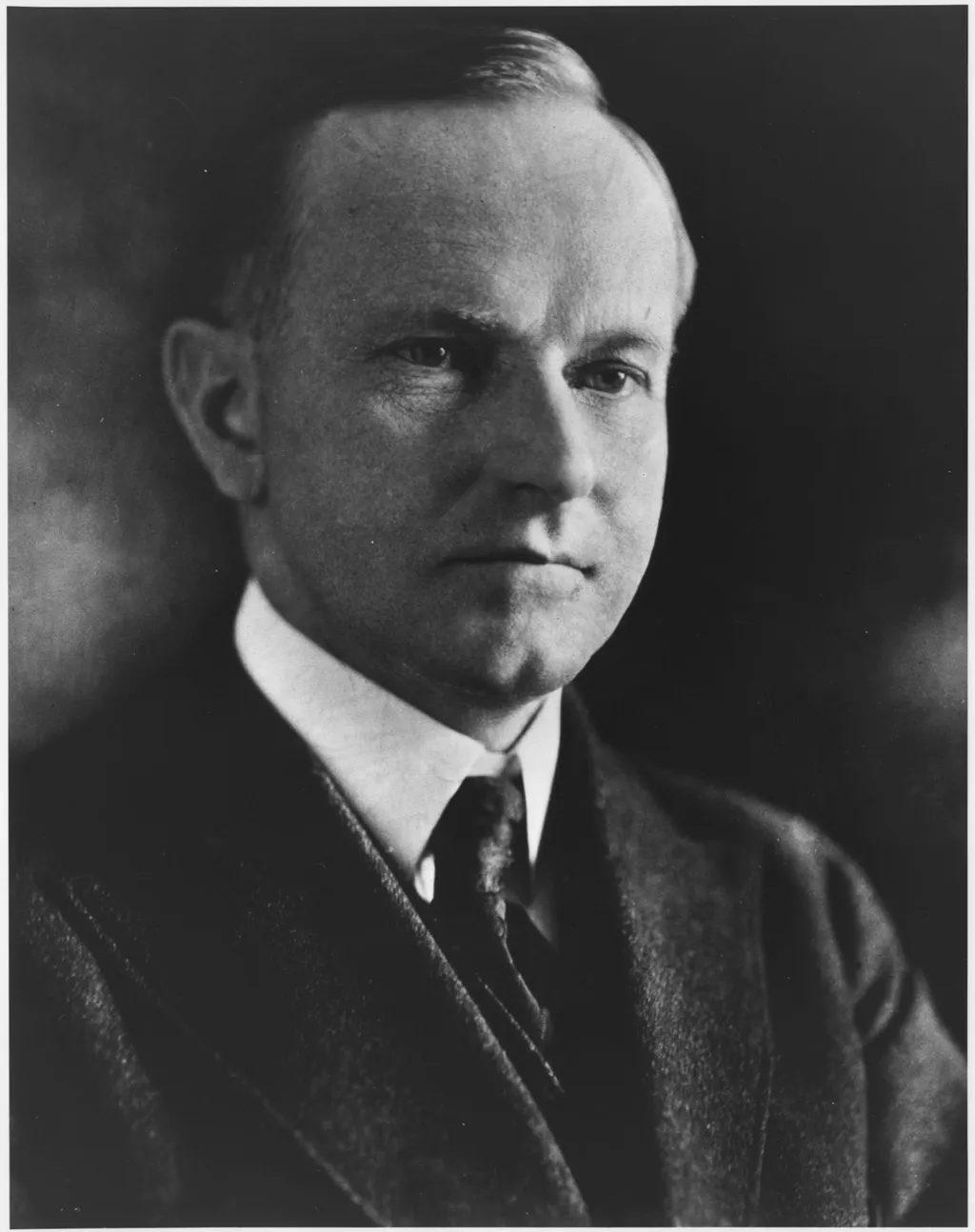
It might be more accurate to say that First Lady Grace Coolidge had a pet raccoon, named Rebecca, but either way, there was a raccoon in the White House in the 1920s. For pictures, Mrs. Coolidge would cradle Rebecca in her arms as if she were a kitten—though that didn't seem like such an odd sight in those times, when families kept all manner of wild animals as pets. It might have even seemed tame for the White House, since the previous president, Theodore Roosevelt, was known to keep snakes, a badger, and even a baby bear.
16
There's Proof of Intergalactic Planets

It's hard enough to spot planets outside our own solar system, so it's pretty amazing that we can finally see far enough to confirm the existence of planets outside of our galactic home address, the Milky Way galaxy. Using a technique called gravitational microlensing that measures the way light bends around very distant stars, astronomers have spotted disturbances that could only be caused by planet-sized objects orbiting those stars. At 3.8 billion light-years away, we can't see these exoplanets directly, but we can now say with certainty that at least 53 of them exist.
17
Hippos Can't Swim

If you've never seen a video of a massive hippopotamus cutting swiftly through the water, do yourself a favor and Google it now. We'll wait. Pretty amazing something so big can swim that fast, right?
Well, get this: it's not swimming. As it turns out, a "swimming" hippo's feet are almost always remaining in contact with the river or lake bed. Their movement would be better described as running or galloping, aided by the perfect balance of bone density and buoyancy. That makes their speed even more impressive than if they were actually swimming—you try running through shoulder-high water!
18
German Chocolate Cake Isn't from Germany

From the dessert's name, you might assume that Germans just love coconut-pecan frosting on their chocolate cakes. However, the cake isn't named for its country of origin, but rather a chocolatier named Sam German. He invented a sweetened baking confection called German's Chocolate, and in 1957, a Texas newspaper printed a recipe from a local woman who used it in her cake. The recipe for "German's Chocolate Cake" took off, and somewhere along the line, the apostrophe-S got dropped. That means German chocolate cake is actually all-American.
19
The Most Dangerous Creature on Earth is the Mosquito
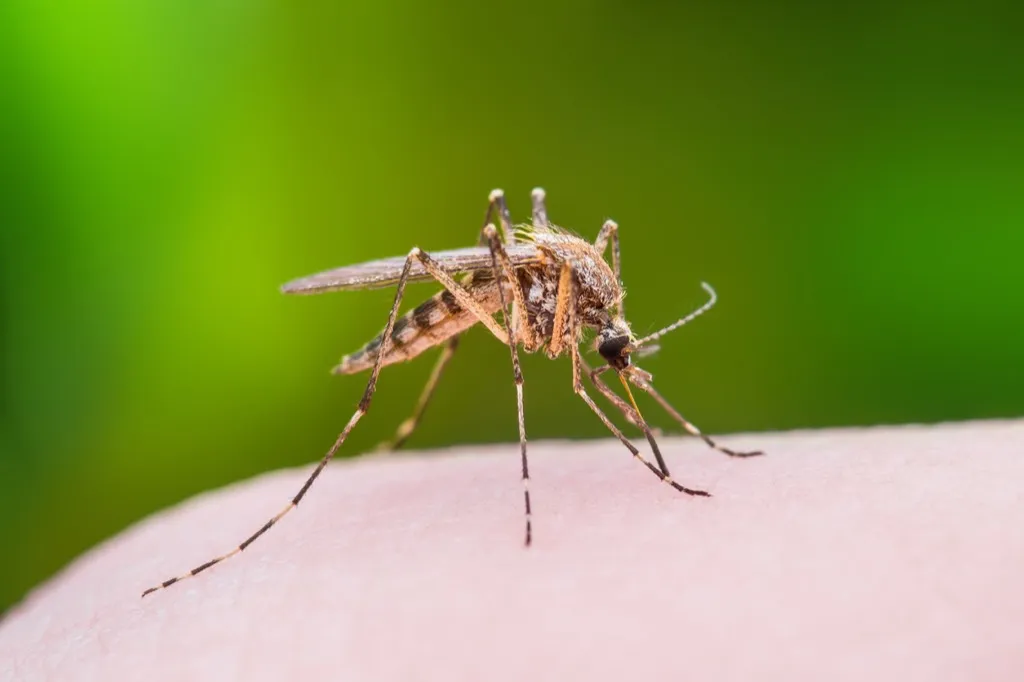
While you'd be forgiven for thinking sharks or tigers or humans are the deadliest species on Earth, that title goes to the humble mosquito. Humans only kill about 475,000 humans every year, whereas mosquitos kill upwards of 725,000. Their kill rate comes from the fact that they spread disease—about 83 percent of those yearly deaths are due to malaria alone. If that's not icky enough, it turns out that, during their peak breeding seasons, there are more mosquitos on Earth than any other animal save for termites and ants.
20
The "Golden State Killer" was a Former Cop

Police all across the state of California have been hunting a notorious rapist and murderer nicknamed the "Golden State Killer" for years, and, in April of 2018, they finally got their break. DNA tests came back proving that 72-year-old Joseph DeAngelo murdered at least 8 women and assaulted many more in the 1970s and '80s, some while he was working as a police officer. Though it took decades to identify him, survivors of his attacks and families of the victims finally have a chance to see justice served.
21
Hydrox Cookies Were Invented Before Oreos

Since they're cheaper and less well-known, you might naturally assume that Hydrox cookies, with their dark chocolate wafers and vanilla cream, are knock-offs of Nabisco's Oreo cookies. However, the truth is the reverse: Hydrox first came out in 1908, but Oreos didn't hit the shelves until 1912. It was Hydrox's name—meant to evoke purity, but sounding more like a cleaning product – that was likely its undoing. Hydrox stuck around, though, in part because they were kosher from the beginning, while Oreos didn't become kosher until 1998.
22
Viagra Can Keep Cut Flowers from Wilting

Viagra, which was originally designed to fight heart disease, has yet another unexpected application in floristry. In a "why did they even do this?" experiment, researchers found that 1 mg of Viagra was enough to keep two vases' worth of flowers standing straight at attention for a week longer than they otherwise would have. The drug stops certain chemicals in the flowers from breaking down, which in turn slows the wilting process. There's hope that this might improve our pre-packaging of fresh produce, but really, the scientists probably just tried it because they could.
23
The Chainsaw Was Originally a Surgical Instrument

The forerunner of the modern chainsaw was actually a medical tool used to remove diseased bone and aid childbirth. Invented by a pair of Scottish doctors in the 1790s, the device had all the familiar chainsaw parts: a chain of angled cutting teeth that rotated around a central shaft, though (thankfully) it was cranked by hand and not a motor. Remarkably, it was a real advancement at the time because it required a smaller incision than other surgical methods. It wasn't adapted for tree cutting until more than a century later.
24
The Last Letter of the English Alphabet is J

That is to say, J was the last letter added to the set of 26 that now make up our alphabet song. I and J were actually used interchangeably for centuries—recall that scene in Indiana Jones and the Last Crusade—until 1524, when an Italian grammar enthusiast used a J to distinguish the soft-j sound as found at the beginning of "Jesus" (Iesus in Greek and Yeshua in Hebrew). Before that, a written J had just been an embellished letter I.
25
Television Makes Us Dream in Color

Some people dream in black and white, but others dream in color, and the dividing line seems to involve the advent of color television. A study of 1940s college students reported that 70.1% of them rarely or never dreamed in color, whereas a study from 2001 showed that the number had dropped down to 17.7%. In fact, another study concluded that it might be impossible to truly dream in black and white unless you've had significant "black and white media experience."
26
The Planet Uranus Was Originally Named George

In 1781, an amateur English astronomer discovered that a bright object in the night sky, first thought to be a star, was actually moving like a planet. Indeed, he had discovered the seventh planet from the Sun, and to honor the English king who had by then hired him on as Royal Astronomer, he named it Georgium Sidus, or "Planet George." Astronomers elsewhere in Europe didn't like how Anglo-centric the name was, so they gave it a name from classical mythology. "Ouranos" was anglicized into "Uranus," and a thousand juvenile jokes were born.
27
Rats Didn't Spread the Black Plague

For years, our understanding of the Black Plague—a disease that wiped out millions of people around the 14th century—was that the sickness spread when trading ships carried diseased rats to new places. The theory was that the fleas that lived on those rats would pick up the infection and transfer it to humans. However, new epidemiological models show that we might have framed the rats. Given historical infection and death rates, it's far more likely that the plague spread through Europe and Africa through flea-infested humans and person-to-person methods like coughing.
28
Languages Have More Names for Red than Blue

On the color spectrum, pink, red, orange, and yellow are often referred to as "warm" colors, whereas green, blue, purple, and gray are "cool" colors. In languages all across the world, people have more names for warm colors than cool ones. That means it's easier to describe a warm color than a cool one in over 110 languages. Our ability to communicate about warm colors may have been important for early humans gathering food—after all, many ripe fruits and vegetables are red in color.
29
Wombat Poop is Cube-Shaped
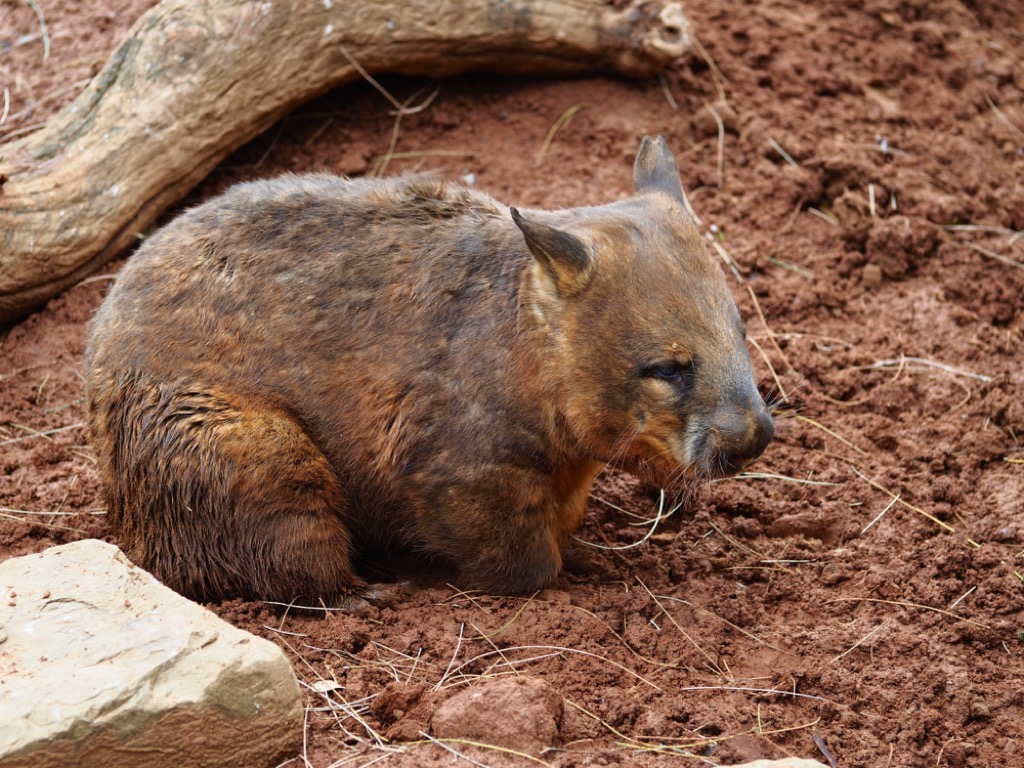
Another marvelous Australian marsupial, the wombat looks more like a teddy bear than an actual bear does. One of their many quirks is their ability to excrete poop in cube form. They have a long intestinal tract combined with a slow digestion rate, so the waste from the food they eat is shaped by the ridges of their large intestine. However, it doesn't have enough water content to be reshaped at the exit door, so to speak. Square poop might also have an evolutionary advantage, as cube-shaped territory markers are unlikely to roll away from their original location.
30
Rasputin's Murderer is the Reason Films Have Disclaimers

Surely you've seen the blurb in movie credits that says, "This is a work of fiction. Any similarities…" blah, blah, blah. It's in there because, in 1933, MGM decided to make a film about the death of Rasputin and the fall of the Romanov reign. Thing is, one of the men who had helped kill Rasputin was not only still alive, but also making money off of a memoir that bragged about his part in the Mad Monk's murder. Even though the character was renamed, the assassin was able to successfully sue the studio for libel.
31
Toilet Seat Covers Don't Do Much

Many users of public restrooms may feel very uncomfortable letting their bare skin touch the toilet seat, so they employ paper covers or the ever-popular "butt hover" strategy. However, according to public health experts, there are very few germs that can cause infection simply from touching intact skin, so paper covers are essentially pointless, and all hovering does is splash pee around. It's far, far more important that you wash your hands after using any restroom since most diseases are transmitted by the disturbingly-named "fecal-oral route."
32
Carl Sagan's Laugh is Broadcasting in Outer Space

In 1977, NASA created and launched the Voyager probe, an unmanned craft designed to travel far beyond our solar system and serve as a greeting card on behalf of humanity. Onboard was the Golden Record, a collection of music plus a 12-minute audio essay that includes a variety of sounds heard on Earth. One of them, now barely audible in degraded copies of the record, was a person laughing, and for years, no official record identified that person. After a great deal of sleuthing, a journalist finally pinpointed the laugher as none other than Carl Sagan.
33
Melbourne, Australia, Used to be "Batmania"

In 1835, the delightfully-named John Batman led an exploration across the area of southeastern Australia we now call Melbourne. He "bought" a plot of land from eight Aboriginal elders and set up camp on the north bank of the Yarra River, naming the settlement after himself. Alas, it would only be two years before it would be renamed after the British Prime Minister and Second Viscount of Melbourne, and another century before the fanzine that capitalized on the popularity of Adam West's Dark Knight.
34
We Used to Sleep Twice a Night

There is mounting evidence that, before the Industrial Revolution, humans used to sleep in two shifts every night, waking up for an hour or two in between. Without a regulated work schedule that demanded a certain bedtime, people used to go to bed when they'd finished their day—about an hour after dusk—sleep for three to four hours, wake up, sleep for three to four more hours, and then rise for good at dawn. Some insomniacs who currently experience difficulty sleeping through the night might be better suited for this split sleep schedule.
35
Scientists Can Produce Particles with Negative Mass

The smaller you get, the weirder the rules of physics are. When you get down to the subatomic level, they can be hard to even imagine. For example, earlier this year, scientists created a device that can generate tiny particles, half made of light and half of matter, that behave as though they have negative mass. In non-scientific terms, that's like pushing an object away, but the object comes closer to you. Physicists call them "polaritons" and think that they might help us find ways to generate lasers using much less energy.
36
The Third-Largest City in Nebraska is a Football Stadium

Clearly, Nebraska is known for its amber waves of grain, rather than its metropolitan areas, but it does have two sizable cities in Omaha (population: 450,364) and Lincoln (population: 287,870). However, the third-largest "city" only exists when the University of Nebraska Huskers football team plays a game at its home stadium, which has a capacity of 86,047. The stadium doesn't even need to be at or near capacity to count, since the fourth-largest Nebraska city, Bellevue, has only 54,223 residents.
37
A Cat Once Co-Authored a Published Physics Paper

In 1975, physicist Jack H. Hetherington had a brilliant paper ready for publication in a renowned scholarly journal, but there was a problem: throughout the paper, he used the royal "we" when describing his actions. The journal's policy was to only use plural pronouns if there was more than one author, so Hetherington had a choice: completely re-type the paper (on a typewriter) or add a colleague's name, thereby splitting the profits and credit. Instead, he added a feline "co-author," F.D.C. Willard, which stood for Felix Domesticus, Chester—Hetherington's pet cat. And for more pets that totally get stuff done, here are 15 Animals with Impressive Titles.
38
Music Makes Wine Taste Different

A recent study showed that listening to different types of music while drinking wine changed the perceived taste of the beverage. When participants listened to intense opera music, they were more likely to describe a wine as "heavy and powerful." Meanwhile, participants who listened to "Waltz of the Flowers" from The Nutcracker were more likely to describe the very same wine as "subtle and refined." The effects were strongest for red wine. Interestingly, whether the participants liked the music didn't have any effect on whether they liked the wine.
39
Being Underwhelmed by Paris Can Make You Ill

Psychologists call it "Paris Syndrome," and it happens to some people who visit the City of Lights and find it so different from their expectations that it causes real psychological symptoms. Sufferers may experience delusions, hallucinations, paranoia, or even dizziness, sweating, and nausea. It seems to affect Japanese tourists more than others, but only at the rate of around 20 a year. No one's quite sure what causes it, but there's thought that the Japanese media and culture, more so than that of other countries, portrays Paris as full of nothing but models and high-end fashion stores.
40
Russian Scientists are Resurrecting the Woolly Mammoth

In a story straight out of a Michael Crichton novel, Nikita Zimov is attempting to turn a 50-square-mile plot of land in Siberia into "Pleistocene Park." His goal, however, is not tourism, but preservation—he wants to keep the permafrost from melting by planting Ice Age foliage as widely as possible. He's even teamed up with a geneticist to bioengineer a new species of woolly mammoth out of the endangered Asian elephant. Though bringing one of these neo-mammoths to term is still years in the future, Zimov continues to stock his park with cold-weather plants and animals.
41
The "She" Who "Sells Seashells by the Seashore" Was a Real Person
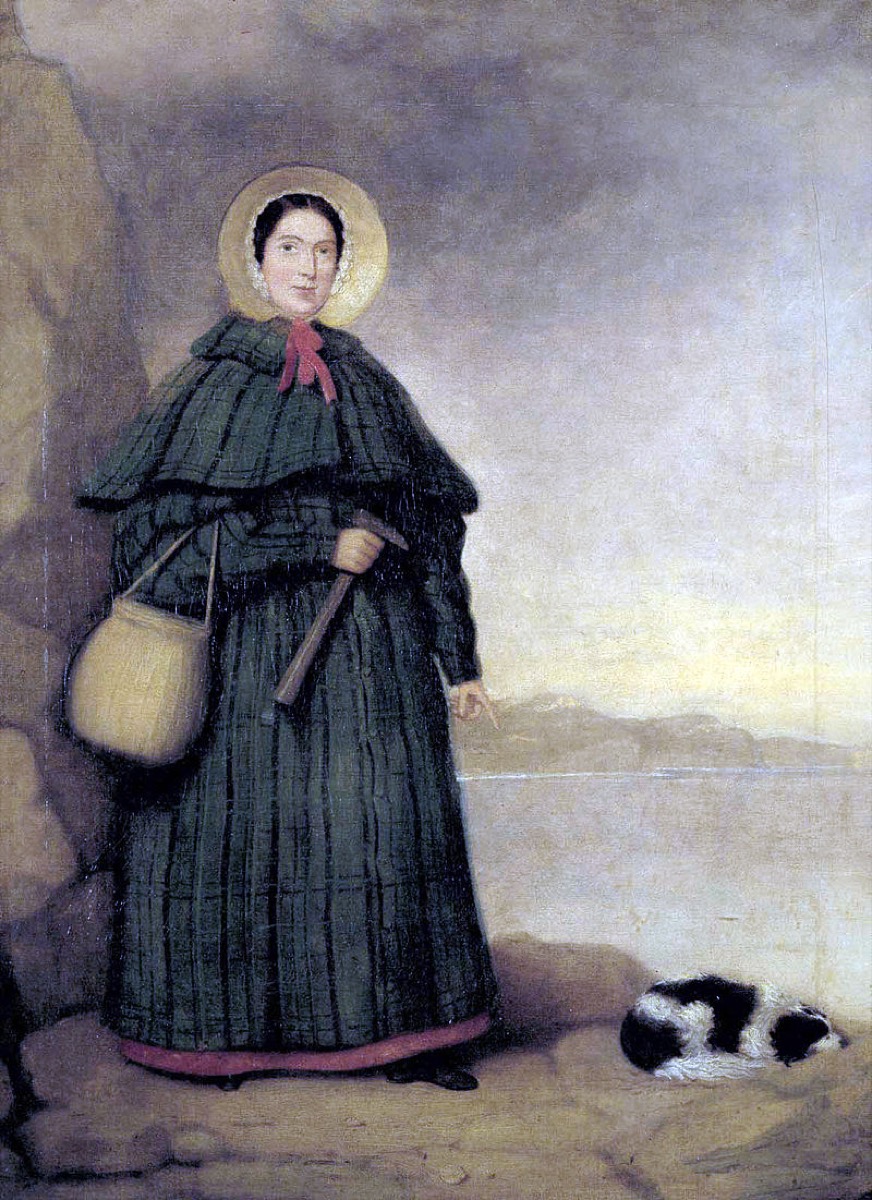
Early-19th-century paleontologist Mary Anning learned the trade from her father, with whom she'd explore England's "Jurassic Coast" near Dorset in search of fossils. At the age of 12, she and her brother unearthed the first complete skeleton of an ichthyosaurus, and she spent the rest of her life uncovering ancient animal remains. However, since she was a woman, the scientific community shunned her (while taking credit for her work), so her only source of income was a small stand she set up at the shore from which to sell fossils, many of which were ammonite shells.
42
Having a Black Belt Doesn't Make You a Martial Arts Expert

Although we've come to associate a "black belt" with extremely high proficiency, in fact, it's only a mark of basic competency in all areas of a particular martial art. Though it does typically take three to six years to earn, it's the equivalent of a bachelor's degree—certainly an accomplishment, but not the end-all of the learning process. The Japanese word for a first degree black belt is shodan, which literally means "first step." Though martial arts do differ in the degrees above black belt, the highest in Japanese is juudan, or "tenth step."
43
There's No Such Thing as an "Alpha" Wolf
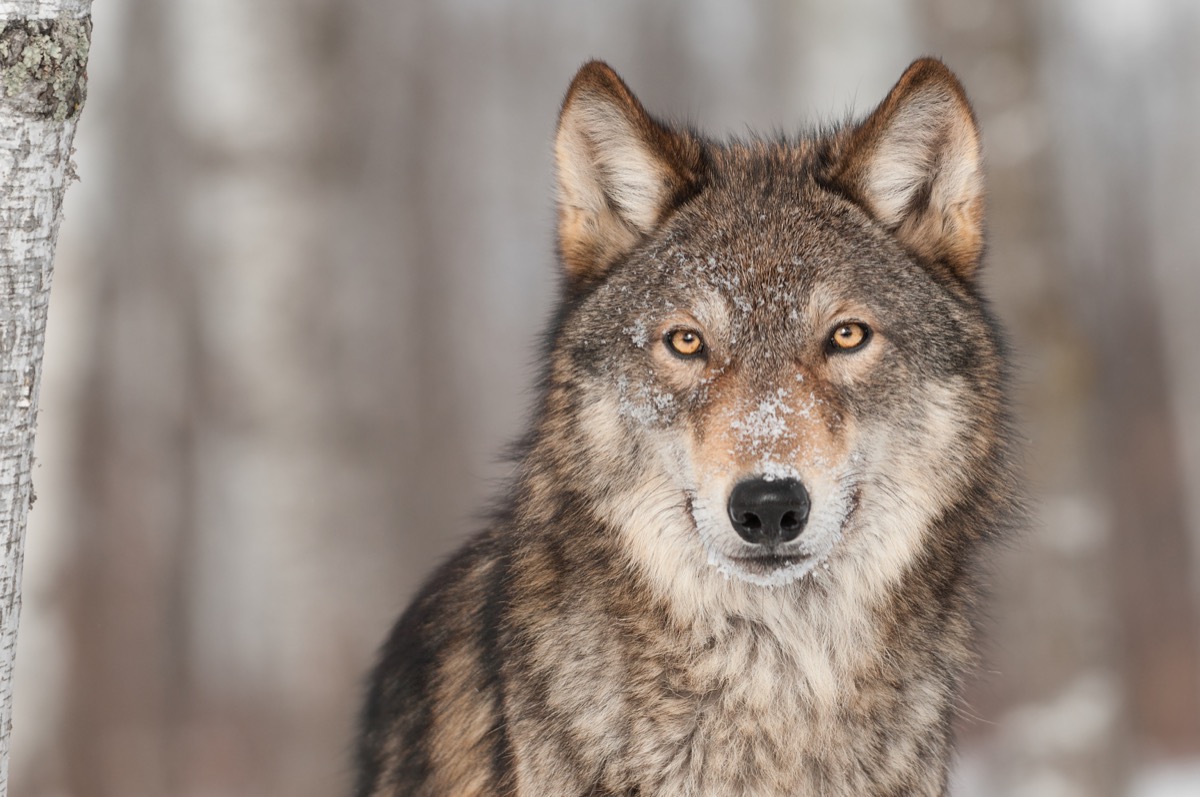
While a distressing number of people (men, in particular) seem to have based their understanding of society on the structure of a wolf pack, everything we think we know about that structure came from studies of wolves in captivity. In the wild, wolves simply act like families—the older members act as leaders, so the "alpha pair" are simply parents. There's no fighting one's way up the hierarchy, and the pack isn't divided into leaders and followers. As the cubs get older, they simply go off and start packs of their own.
44
It's Possible for Two Female Mice to Have a Baby
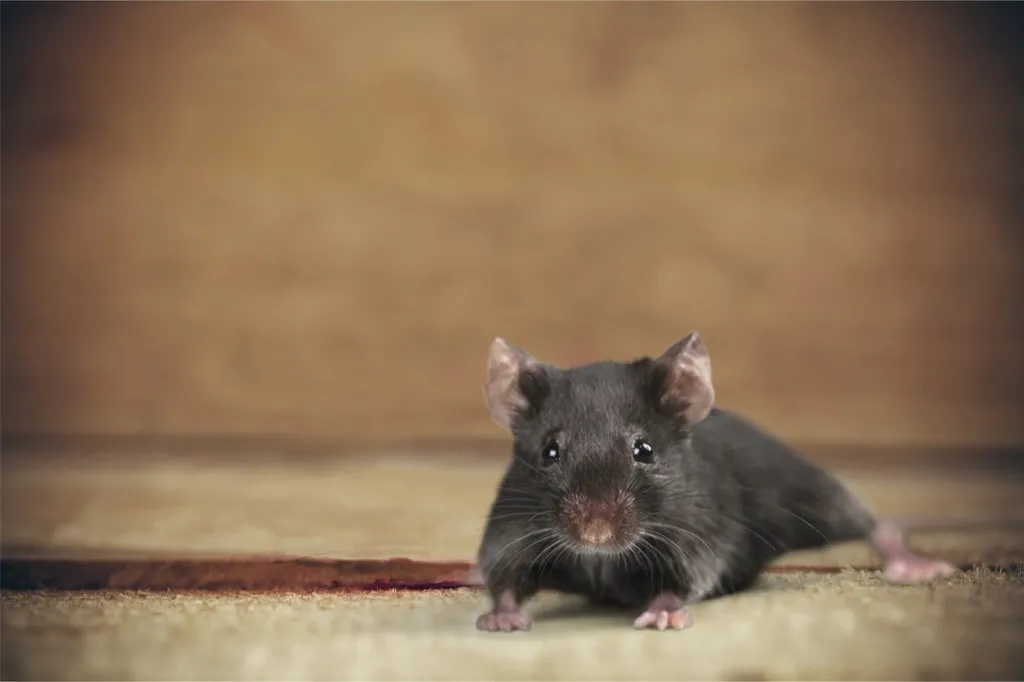
Of course, they need genetic scientists to make it happen. Chinese geneticists used stems cells and a gene-editing process to create mice using the DNA from same-sex parents. The mice with two male parents only lived for a few days, but the mice with two female parents lived into adulthood and reproduced normally. Unfortunately for same-sex human couples, the process wouldn't work for human embryos, but the fact that it is possible in mammals at all is an exciting discovery.
45
Ancient Greek Sculptures Were Painted Bright Colors

Take a moment to imagine a classical Greek sculpture. What probably comes to mind is a largely monochrome image—white, maybe with a little bit of beige marbled in. As it turns out, they only look like this now because the bright paint has worn off over the years. Between the use of special ultraviolet lamps and a few choice passages in Greek literature that refer to colored statues, it's now clear that Greek artists painted their sculptures in bold primary hues. It might look wrong to our modern eyes, but it was all the rage in Ancient Greece.
46
It Took 10,000 Pig Pancreases to Make One Pound of Insulin

Nowadays, insulin is manufactured in a laboratory by microbes specially engineered for the purpose, but before this was possible, medical insulin was harvested from animals, particularly pigs. In the 1920s, drug manufacturer Eli Lilly bought slaughterhouse waste by the truckload, grinding up thousands of pig pancreases for the small amounts of insulin they contained. It took huge amounts—at a ratio of 10,000 to 1—but the company was able to produce medicine that saved the lives of many diabetic children.
47
Antarctica Has an ATM

Even the researchers living in Antarctica need cash sometimes, so Wells Fargo has provided these intrepid souls with the continent's only ATM. It resides in McMurdo Station, where most of the researchers also live (there are anywhere from 250 to 1,000 residents at the station at any one time). Although there are actually two ATMs, only one is operational, while the other exists to provide any necessary spare parts. Unfortunately, if it breaks, a maintenance person only shows up to service it every two years.
48
You Don't Actually Swallow Spiders in Your Sleep

Sometimes busting urban legends is disappointing, but other times, it's a relief. If you've heard something like "the average person swallows eight spiders a year in their sleep," relax: it isn't true. Your bed offers the spider no prey in the first place, and even if it gets near your mouth, you're still breathing, and maybe even snoring, which is a warning to the spider to stay away. While it's not impossible for a spider to crawl on your face, you're very likely to wake up if that happens, and it's certainly not a common event.
49
Medieval Europeans Had Rap Battles
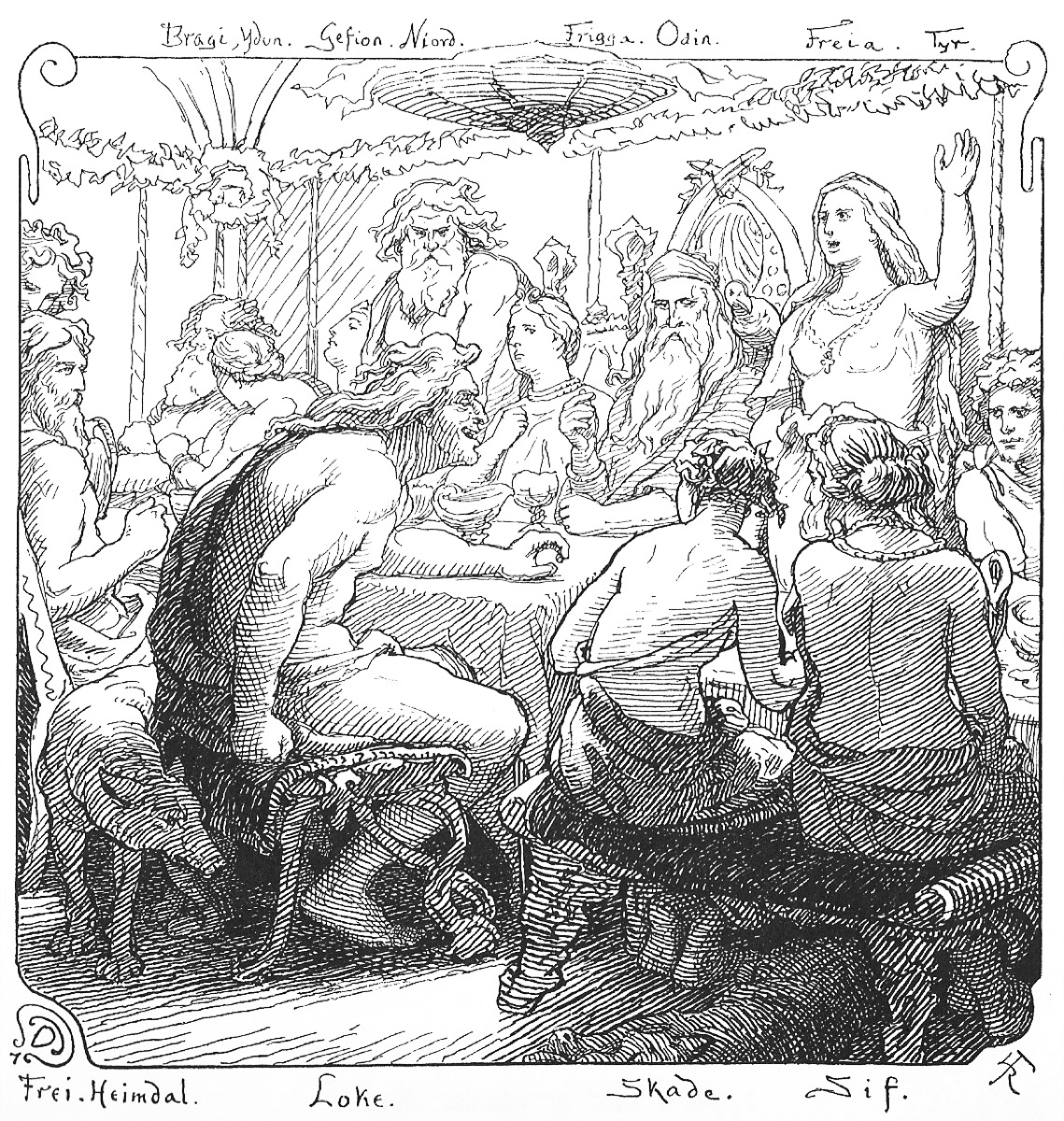
While you might be tempted to think that the exchange of insults in poetic spoken verse is only a few decades old, it goes back to at least the 15th century in England and Scotland. This form of "abusive poetry" was called flyting, and it was often performed for the amusement of the king. Although general verbal jousting has probably been around since language began, this poetic, ritualized form shows up in cultures from Japan to Nigeria.
50
Dogs (Probably) Dream About Their Owners

According to an evolutionary psychologist from Harvard, dogs probably dream about their everyday experiences, and that largely means the sight, sound, and smell of their owner. While there's no way to tell for sure, since you make up a big part of your dog's waking day, you probably feature heavily in their dreams, as well. However, the same doesn't apply to cat owners—apparently, cats most likely dream about predatory behavior like hunting mice. And for more on why dogs are just the best, here are 25 Photos Proving Dogs Are the Best Co-Workers.
To discover more amazing secrets about living your best life, click here to follow us on Instagram!





















